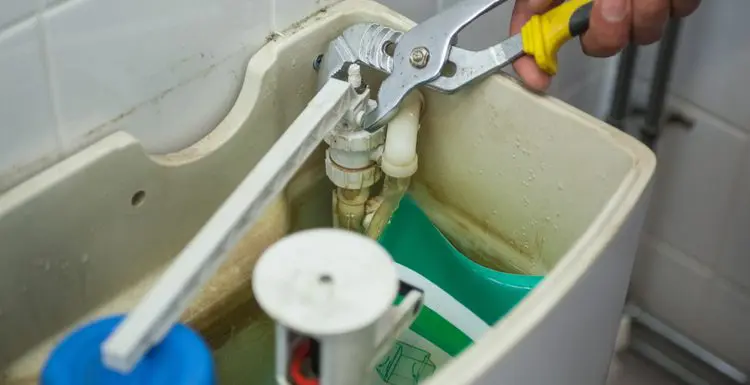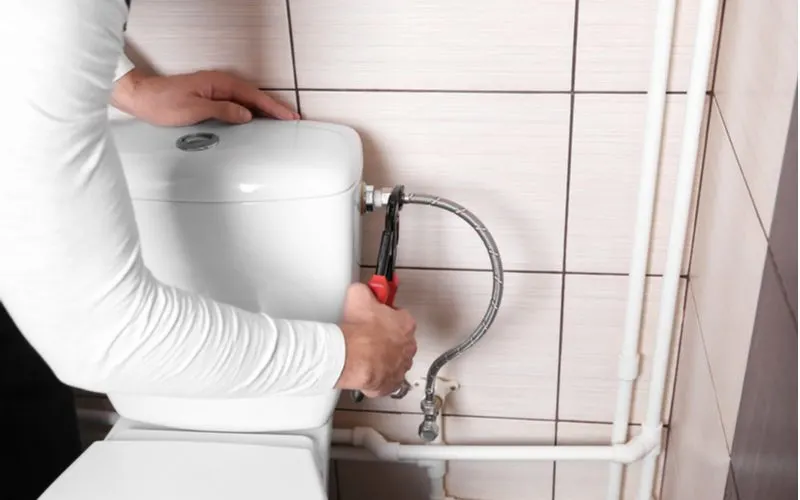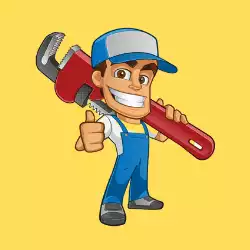Toilets are everywhere, and they’ve come a long way from outhouses and latrines. In the USA, residential toilet flushes account for 30% of each home’s water usage.
But, unless there’s a problem, it’s unlikely you’ll ever think about anything more than flushing one.
There are lots of parts of toilets that make them work. And when they become worn out, replacing them is often relatively easy to do, even more so when you can identify the different parts.
In college, I worked in the plumbing department at Menards, so I consider myself an expert on all things related to plumbing. I’ve made a helpful guide below to help you avoid calling a plumber, saving you a lot of money!
Toilet Parts and What Each Does
You don’t necessarily need a plumber if there is a minor issue with a toilet. Even knowing just a little bit about the parts of a toilet and how they work can come in handy.
1. The Bowl
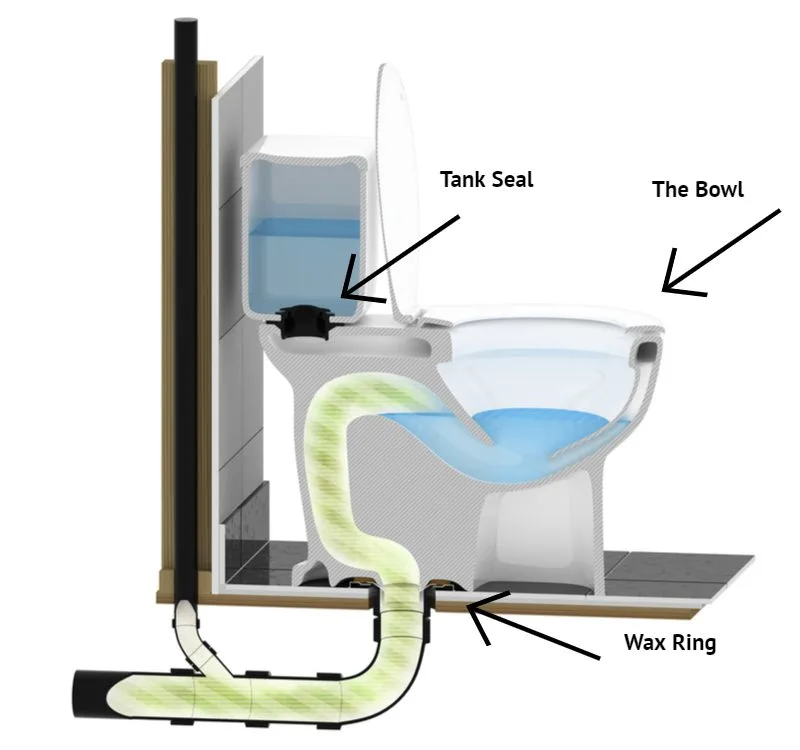
Timofey Manzyuk/Shutterstock
The toilet bowl is the place where you sit. From the outside, it looks simple enough. A toilet bowl is just a smooth, rounded commode made of porcelain.
But inside of that bowl lies a bit of anatomy that makes flushing possible.
The Tank Seal
This junction is the point where the toilet’s bowl connects to the tank that sits on top of it. When you flush a toilet, the dirty water inside the tank flows out, and the water in the tank replaces it.
The water flows through the tank’s seal, also called an O-ring, or sometimes just a “tank to bowl” gasket. This small piece of hardware keeps the connection between the tank and the bowl watertight.
The Toilet Flange
This flange, or joint, is the actual mount on the floor that holds the toilet to the floor. It is also the plumbing connection for the toilet drain. A flange is usually hidden by the toilet’s base, where the flange is affixed to the floor with a few screws.
Some flanges also require the application of a sealant to cement the connection further. Follow the manufacturer’s instructions for proper application and mounting.
The Wax Ring
This seal made of wax is another part of the toilet that most people never see. But the wax seal is something that plumbers know a lot about, as it is a standard replacement part, and a new one is necessary for every toilet installation.
Additionally, many toilet leaks occur at this point, where the toilet mounts to the floor’s flange. The wax seal maintains a water- and air-tight seal between the floor flange and the toilet.
The integrity of a wax seal can break down over time, so if you ever notice a bit of water seeping from the base of the toilet after a flush cycle, it’s pretty likely you need a new wax seal.
More Toilet Bowl Parts
- Toilet Bolts: Secure the toilet’s base to the floor flange beneath
- Toilet Bolt Caps: Match the color of your toilet and hide the bolt heads from view
- Toilet Seat: The part of the toilet we are most intimately familiar with, either oval or round
- Toilet Seat Cover: The fold-down cover that covers the seat when the toilet isn’t in use
- Toilet Hinge Bolts and Covers: the system of fasteners that secure the seat and cover, allowing them to open and close
2. The Toilet Tank
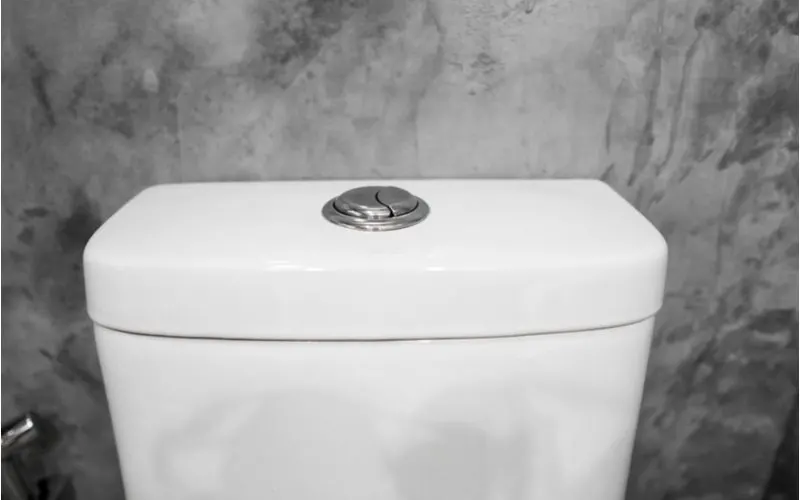
Volodymyr_Shtun/Shutterstock
The toilet tank is mainly responsible for making our flushes possible.
3. Outside the Tank
Let’s start with the parts of the tank we can see.
- Toilet Handle: This is the lever that we depress to activate the flushing mechanism.
- Water Supply Valve: The valve controls the flow of fresh domestic water into the toilet tank
- Water Supply Connector or Line: Typically a short, braided section of hose that connects the tank to the water supply valve
4. Inside the Tank
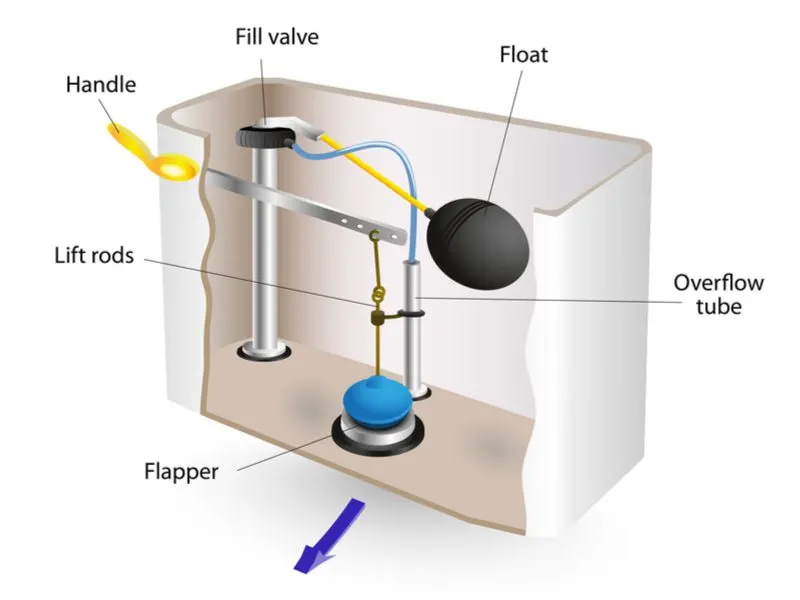
Designua/Shutterstock
If you lift the lid off the top of your toilet tank, these are the parts you’ll see inside:
Flush Rod
The flush rod is the internal extension of the exterior flush handle. Typically, a reverse-threaded plastic nut fastens it to the inside of the tank. This nut can often become loose.
Lifting Chain
A short section of chain or wire connects the flush rod to the rest of the flushing mechanism. If the rod’s fastening nut works itself loose, your chain may slip off.
So it’s a good idea for you to inspect this system regularly, so you know it is supposed to work and that it is functioning well, making troubleshooting possible down the road.
A broken lifting chain is one of the most frequent culprits for a toilet not flushing.
Tank Ball: AKA The Flapper
There is a simple flapper, or tank ball, at the tank’s base that seals the flush valve, holding the water inside the tank. Since it is attached to the lifting chain, the flapper lifts up when the handle is depressed, opening the valve and sending the clean water of the tank down into the bowl.
Flappers are the workhorse of our flushes, so, unsurprisingly, they need periodic adjustment or replacement. If your toilet keeps running when it hasn’t flushed recently, the flapper is likely the culprit.
Additionally, a slow flushing toilet is often caused by a flapper valve that needs to be replaced. Fortunately for you, these are one of the least expensive toilet parts to replace and can be done in just a few minutes.
Flush Valve
The flush valve is the internal partner to the tank seal. Together, they cushion, seal, and maintain the connection between tank and bowl.
Overflow Tube
The overflow tube sits vertically inside the tank and is open at the top. When the water level exceeds the capacity of the tank, it falls into the overflow tube and down into the bowl. This system prevents the water from overflowing your tank.
Water Supply Valve
This valve controls the flow of water into the tank. Sometimes called a ballcock, it asks for more water when the toilet is flushed to replace what came out of the tank. Then, when the tank has refilled, it stops the flow of water.
Float
The float is part of the supply valve. As water returns to the tank and its level increases as it replenishes after a flush, it lifts this valve. When it reaches its setpoint, signaling that the tank is full, the valve closes, stopping the water flow.
Refill Tube
This small tube extends from the flush valve to the overflow tube. Its purpose is to allow a trickle of water to enter the toilet bowl during the flush cycle.
It replaces the small volume of water that sits inside the base of the bowl in between flushes.
That small amount of water is an essential safety feature of toilets. It maintains a seal between our homes and the sewer, preventing sewer gas from backflowing into our homes.
Frequently Asked Questions
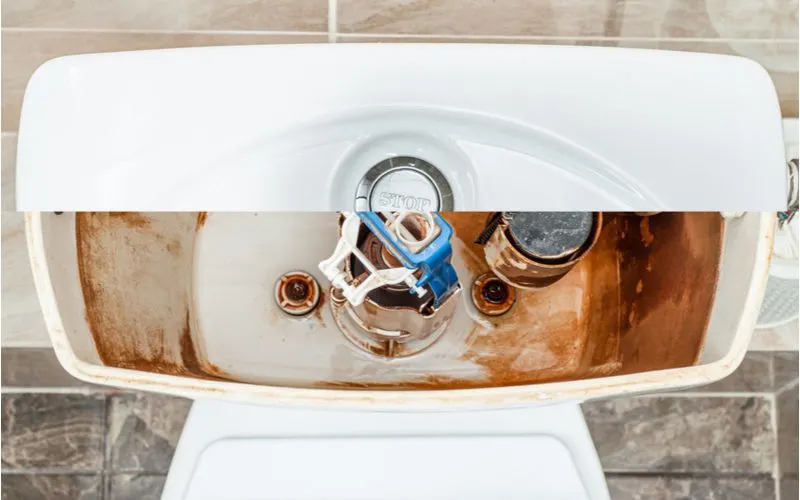
VVVproduct/Shutterstock
Many homeowners have questions about toilets. We use them all the time, so minor issues often need attention. Knowing the parts of a toilet can be very useful.
How Do I Identify My Toilet Parts?
The easiest way to identify toilet parts is to have a basic understanding of the layout of your toilet. You don’t necessarily need a plumber for every minor toilet repair.
Having a basic understanding of the parts of a toilet and how they work can save you a lot of money. Reading our guide is a great start.
What’s Inside a Toilet Tank?
Don’t be afraid to lift the top of your tank off. Set it down carefully on the floor and perform a flush.
You can watch the water drain, and then you’ll see the action of the flapper, the handle, the float, and all the moving parts come together to complete the flush cycle.
The Water Is in the Way. How Can I See My Toilet Parts?
If you want to play around a bit or look more closely, consider shutting off the water supply valve. This maneuver will stop the tank from replenishing itself with water and allow you to look more closely at the internal parts.
Then, when your inspection is complete, simply turn the water back on and watch the tank refill. Then carefully replace the tank’s lid. It’s always a good idea to be very gentle with the lid, as it is heavy.
It can damage the surfaces it comes in contact with if you aren’t careful. It’s also pretty easy to chip the lid, potentially leading to an unsightly mark or even a crack that would require replacement.
Can I Change Toilet Parts Myself?
If something ever goes wrong, having a bit of an understanding of the internal parts will help you do some troubleshooting. It’s pretty likely that you can replace a faulty part yourself.
If you’re not sure what to call a particular part, even after reading this guide, just bring it with you to the local hardware store and ask for help.
How Does a Toilet Work?
There is sometimes a bit of a mystery to how toilets work. But, they are based on a relatively simple design.
Deep inside the base of the bowl, there is an S-shaped drain. That drain is essential for flushing and for preventing the return of unwanted sewer gasses into our homes.
It allows some water to sit inside the bowl, creating a seal between the sewer system and our homes.
Combined with the flush valve and the gravity-fed design of a modern toilet, the convenience of a flush toilet has become a standard in much of the world.
We partnered with Networx to help you find local plumbers in your area. Click to below to get a FREE quote.
Before You Go
There you have it—that’s how toilet parts work!
While we doubt that too many people (besides plumbers, perhaps) have a keen interest in toilet design, it is helpful to understand the engineering of a toilet if you can’t find a plumber.

